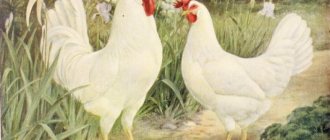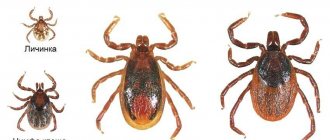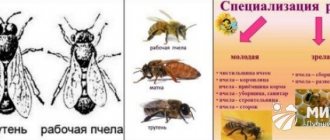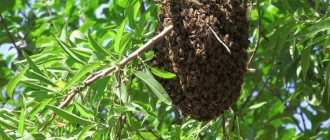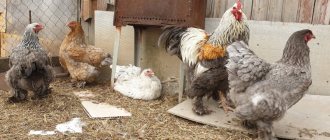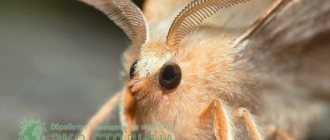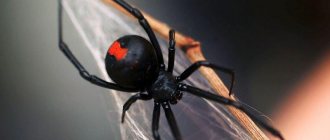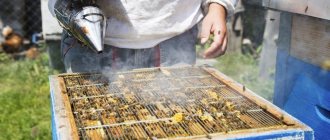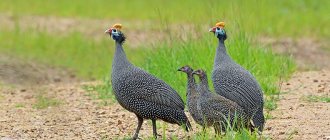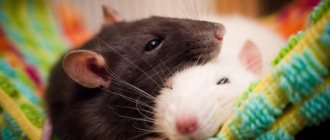Today there are over 2 thousand breeds of bees in the world that work in various countries and continents. Depending on climatic conditions, the characteristics of bee breeds differ from each other. This manifests itself in appearance, behavior, and performance.
There are different types of bees, which have their own descriptions compiled by experienced beekeepers. They are strictly classified, so studying the features of each is extremely important.
Instead of a preface
How many beekeepers know that the average honey bee has 25 geographic races and an incredible number of breeds? A competent beekeeper should know, if not all, then at least those that are found in his region. In this article we tried to collect the most common types of bees with photos, names and descriptions.
Varieties consist of physiological characteristics:
- color;
- size;
- length of the proboscis (an important characteristic affecting pollination and nectar collection);
- the number of wax glands (affects wax productivity);
- the number of tubes in the ovaries (which directly determines egg production), etc.;
Types of queens
For successful reproduction, it is necessary to know the root causes of the formation of queen cells in the colony and the types of queens.
Fistula
Hatched when an old female dies. The queen cell consists of a bowl (preliminarily placed on the honeycomb for the purpose of breeding the queen bee). In an emergency, bees expand the hexagonal cells on the honeycomb. The queen cells are located on the surface of the honeycomb, from which they seem to bend vertically.
The disadvantage of "emergency" females is that they are bred from older larvae; the future “head of the family” is fed with royal jelly for a shorter time than in the case of rearing from an egg. This affects its size and weight.
Swarm
Queen cells are placed along the edges of the honeycombs. The base is a built-in bowl. In this thicket the female lays eggs. The bees subsequently take care of the laid eggs - they know the growing process. The number of swarming queen cells varies, usually about 10-20.
The disadvantage of swarming dominant individuals is the maintenance of the so-called. swarming gene. In this case, there is a risk that the colony will tend to swarm more.
Silent exchange
If the queen bee ceases to satisfy the colony (mainly due to her old age), a quiet exchange is planned, i.e. breeding a new dominant individual, but without subsequent swarming. The old head of the family lays eggs in a pre-prepared bowl and, immediately after hatching the new queen, cleans up.
There are also cases described when both females live together for some time.
The shape of queen cells for silent replacement is the same as with the swarm method, but they are created in much smaller quantities: 2-4 pieces.
Quiet replacement queen bees are usually of very good quality.
Why you need to know the types of bees
You are unlikely to be able to know all the varieties existing on the planet. It is not necessary. However, each species was formed in specific conditions and adapted to a specific climate, for different products and honey plants. Therefore, the owner of the apiary should know who lives in his hives. Here's why:
- To put less effort (money) into care. For example, the sissies of the yellow Caucasian breed need constant flight; it is extremely difficult for them to survive the long winter, but they have no equal in the heat. At 40 degrees they feel great in the hive without support from the beekeeper.
- To increase productivity. For example, the Old Russian variety has a short proboscis. They prefer to feed on linden and buckwheat, from which nectar is easiest to obtain (in their habitat). But the Caucasian ones boast of a long proboscis (the length of the proboscis reaches 7.5 mm), so they are best adapted to forbs and can obtain nectar from everywhere (and pollinate everything around first-class).
- To make life easier for the colony. It is not for nothing that nature painted all living things in its colors. The color of a bee can tell you about its habitat. Lightly colored insects reflect the sun better, which is good for hot places or steppes. Dark colors attract the sun’s heat better, which is simply ideal for infrequent sun or forests (it’s also more convenient to camouflage).
Useful video about bee breeds and which one is better to choose (without water, everything is to the point. We recommend not to miss this video):
Queen fertilization
The young queen must mate with the drones about a week after hatching - this is a prerequisite for the successful development of the family. Mating occurs in flight in good weather; the queen is pre-fed at a reduced pace so that she can fly.
If for some reason (bad weather, damage to the uterus, etc.) fertilization does not occur, a queen drone appears in the family, which lays only drone eggs. Such a queen must be replaced.
How to choose a productive breed of honey bees
There are several rules for determining who is in front of you (or at least the approximate geographical homeland):
- The northern ones seal the cells with “dry” lids (bars), that is, they leave a small space between the lid and the honey. And this is not just like that: temperature fluctuations provoke an increase in honey in volume, and to prevent the lids from bursting, insects leave a little free space. Wet lids (close to the honey) are a characteristic feature of the Caucasian variety. There are no sharp frosts or temperature fluctuations.
- In meadow and field animals, the wings are longer, the legs and proboscis are also longer, while the northern ones are distinguished by their larger size and the amount of wax produced.
- Dark coloring is a sign of a forest habitat, light coloring is a sign of a steppe habitat.
- The further south the breed is, the more often two queens get along together.
To choose a family with suitable characteristics for your region, you must take into account:
Winter hardiness. This is a characteristic that shows whether insects have enough endurance for a long period without flying and low temperatures. The most winter-hardy are Central Russian, followed by Carpathian and Caucasian (with proper care they winter well in Siberia or the Far East).
Note : There are two Caucasian breeds - gray mountain and yellow valley. Gray hillworts cope well with the cold; the Kabakhtapa population may not have a bowel movement for six months at all. But the yellow ones, on the contrary, are suited to the heat, and historically they have seen little cold weather, so they are not used to it.
Disease resistance. This is the main criterion for survival. General immunity is strongest in Central Russian, Bashkir and Ukrainian populations. Honeydew honey is not terrible for Karnika. The Acarapis tracheal mite will not harm Buckfasts. The foulbrood does not threaten the Far Eastern population. Representatives of the Italian breed eliminate wax moths with their own hands. If the characteristics indicate a specific vulnerability to a particular disease, immediately take care of good prevention and stock up on medications.
Roilfulness . Another factor influencing the number, that is, the strength of families. The departure of the swarm weakens the families and brings losses to the apiary. Different populations of bees in Russia show different propensities for swarming. The Central Russian swarm flies away as soon as the first queen cell is sealed. The only way to save it is to trap it. Crimean ones can wait a whole week; they still have time to switch to honey collection. Karnika discards any thoughts about swarming even with a weak honey flow, and Georgians live with two queens as if this is the norm of life.
Peacefulness . A pleasant, but optional sign. For example, Central Russians are not as evil as the Egyptian or Cypriot population, and lemon balm, which smells like a queen and therefore pacifies insects, can be grown in any climate, even on a windowsill at home.
The most honey-bearing bee breeds (in descending order): Italian, Far Eastern and Priokskaya breeds. However, this indicator strongly depends on the honey collection habits of the family:
- if the main honey flow is early, it is better to choose Karnika or one of the southern species;
- in the middle and late honey harvest (which is typical not only for Siberia and the northern regions, but also for many southern regions), Italian is the best. Up to 400 kg of honey per family - an officially registered Australian result!
- Central Russian and Bashkir varieties (common in the Moscow region) work well in linden, fireweed, buckwheat or heather fields;
- for clover - Italian, Caucasian and carnica;
- for forbs – gray Caucasian and Ukrainian breeds.
- in gardens, in not very flowery areas, species with high flora migration - carnica, yellow Caucasian, Italian - feel good.
- if you want to combine strong, long-lasting honey flow with increased yield, the best choice is the Caucasian gray breed. Their long proboscis allows them to pollinate hard-to-reach flowers. But the Old Russian one has a short proboscis, and not all plants are to her taste.
Carpathian bee (Apis mellifera carpatica)
Another breed of European honey bees is called Carpathian bees based on their place of origin and habitat. The predominant color of the Carpathian bee is gray. The insect is distinguished by a long proboscis, up to 7 mm, good winter hardiness, peaceful character and low sugar content in honey. The queens of this bee species lay up to 1800 eggs per day.
Features of the breed include the early readiness of worker bees to collect honey. However, with a lot of positive qualities, Carpathian bees also have a number of disadvantages. These include a tendency to take someone else's bribe if there is a shortage of flowering honey plants in the area, as well as the absence of any resistance to wax moths penetrating into the hive.
Types of bees with photos and names
To help you balance the pros and cons, here is a list of popular bee breeds with photos, names and brief descriptions for central Russia:
Yellow Caucasian breed
Ideal for hot weather (sitting motionless, not ventilated, but feeling normal). Honey plants change easily, they eat everything that comes under their proboscis. The character is eccentric: they are peaceful towards the beekeeper, but they like to bully weak families. They love to steal other people's honey.
How to identify
The wet signet is the calling card of the Caucasian species. The color is more yellow. They live in the valleys of Georgia, Azerbaijan, and Armenia.
Flaws
- highly swarming - up to 100 queen cells and 12 swarms;
- overcomes nosematosis and honeydew toxicosis;
- low honey productivity (up to 45 kg);
- designed for short and not cold winters.
Central Russian breed
Winters well in extreme conditions. The Central Russian breed is always “the most” and “very”:
- the most productive for wax;
- very productive for honey;
- the largest bees in Russia and Europe;
- the most resistant to foulbrood, nosematosis, and honeydew honey (in this regard, they are second only to Karnika);
- the smallest proboscis;
- the most floristic;
- fertile;
- build quality;
- swarming (it is difficult to stop swarming; there is almost no peaceful cohabitation of queens);
- aggressive.
How to identify
They are dark gray in color, almost black. Homes will be lightly polised. They love to sit on the same honey plant. In Russia - on linden, buckwheat, fireweed, in Western countries - on heather. They are reluctant to switch to others, especially forbs. In the spring they become active later (the climate does not allow it early), but they gain strength quickly, so mid and late honey collections are carried out extremely effectively. Honey is first placed in the outer frames, then in the brood frames. Therefore, there are many cells left for eggs - they are never empty.
Gray mountain Caucasian breed
The Caucasian rock has several fundamentally different populations:
- Kabakhtapa - frost-resistant (-20 -25), lasts for six months without flying around;
- yellow Armenian - for hot climates;
- Kubanskaya (North Caucasian species) - good for hot summers, but swarming (up to 100 queen cells), does not like planted queens, readily turns into polypores;
- Mingrelian (Georgian) - almost all biuterated + the longest proboscis in the world;
- Kartalinskie are the most egg-bearing.
Gray Caucasians are the second most common in Eurasia. Her favorite honey plant is red clover, and she feels like royalty on forbs. This breed flies out earlier than others in the morning for gathering and settles down for the night later than others. They put the honey first in brood frames, then in spare frames. Therefore, there is little space left for eggs. They don’t hesitate to take someone else’s honey, but they stand up for their own.
How to determine
A gray and silver peaceful bee that heavily polises its home. In terms of wax, it is second only to Central Russian. A Caucasian woman is identified by a wet signet pressed tightly to honey.
Disadvantages of the species
- susceptible to nosematosis and foulbrood, severely affected by honeydew;
- During cold weather, egg laying is sharply reduced.
Karpatka
A European breed with excellent winter hardiness (higher than the Caucasian breed), quite peaceful, not roaming, and creative. It quickly gains strength in the spring, collecting any pollen that is closer.
How to determine
- Large, gray in color, although lighter than Central Russian ones.
- The signet is intermediate, closer to white (“dry”, does not touch honey).
Disadvantages of the Carpathian breed
Susceptible to nosematosis and European foulbrood.
Ukrainian steppe breed
A slightly more gentle analogue of the Central Russian breed. Resistant to foulbrood, nosematosis, honeydew toxicosis, cold wintering and hot, dry summers. Unlike Central Russian women, Ukrainian women are peace-loving and less playful. Despite their ardent love for linden and buckwheat, they are more willing to accept forbs. They give a lot of honey.
How to determine
- Gray, slightly silvery, lighter than Central Russian ones.
- The honey signet is white.
Note: Ukrainian beekeepers claim that initially two more breeds lived on their territory: black (boletus) and gray-yellow (jaundice). Now only the Polesie population is considered a separate variety - with even better winter hardiness and average honey production.
Italian breed
The world record holder for queen fertility and popularity (as well as prevalence), the Italian breed of bees actively fights wax moths on its own and keeps the hive in perfect order (beautiful honeycombs, properly polished, without litter). The Italian population loves a variety of food (and also clover and foreign honey), and although these dormouse skip the early honey harvest, they overtake almost everyone during the subsequent honey harvest.
How to determine
There are 3 populations of Italians: three-lined, gray and golden. You can tell by the white honey seal.
Disadvantages of the Italian breed
- Sensitive to nosematosis and honeydew.
- Low winter hardiness (increases with crossing - this is practiced in Finland and Alaska).
- The Cypriot (light, especially drones) population is evil and is not calmed down even by smoke.
Karnika or Krajina breed
Karnika, also known as the Krajina variety, was developed by crossing Cypriot drones with Italian ones. Karnika is absolutely resistant to honeydew honey (whatever you have to spend the winter on...) and low temperatures. It winters well in small colonies, eats modestly, and in the spring the development of bee colonies begins earlier than anyone else. The tendency to swarm is low. The main interest is honey collection. Karnika pollinates everything around well (up to 5 different honey plants per flight): flowers, fruits, berries, and especially loves clover. The length of the proboscis is 6-7mm - this is quite possible. Another advantage of Karnika is its high honey productivity. They love to take honey from the weak, but they cling tightly to their own.
How to determine
- Silver-gray, sometimes yellow stripes are visible (ancient relations with Italians).
- The signet is white (dry), well-built honeycombs, moderate amount of propolis.
Krainki have taken root well in Eastern and Western Europe, in Russia. Within the breed, there are several main strains: Troyzek, Sklenar, Peschetz, Serbian, Polish, Lower Austrian, Hollesberg.
Reviews about Karnik are mostly positive. This is one of the problem-free breeds. Aggressiveness and playfulness are in moderation.
Bees Buckfast
They are backfests. An artificially bred population with tasty properties, which must be preserved, otherwise the characteristics of the breed deteriorate and aggressiveness increases. They are resistant to the acarapis tracheal mite, and rarely suffer from chalk brood and wax moths, as they clean the hive well. They are not aggressive when examined, are not playful, and eat whatever is given. Any plant with pollen is suitable as a source of honey.
Note : the ancestry of these thoroughbred Englishmen begins in the English Abbey of Buckfast, from the Benedictine monk Adam (before the ordination of the German Karl Kerle).
Classic set of genes:
- a bit from the Italian breed (which survived acarapidosis);
- English dark bees (which did not survive acarapidosis);
- Greek breed;
- French breed;
- Armenian breed.
- Later, admixtures of Saharan and African bees were added (but not a drop from the infamous killer bee).
I recommend: a more detailed article about the Buckfast breed
Advantages of Buckfast
Buckfasts always give good bribes. Even under unfavorable conditions. If there are no honey plants near the hive, they will fly far, but they will find nectar. In spring they fly out of the hive early. Clean breed. They live in large, strong families. One hive - one family.
Disadvantages of Buckfast
- expensive;
- does not tolerate long, cold winters;
- do not reproduce well in winter.
Advice : if you live in the northern regions, take Karnika instead of Buckfast.
Bashkir bee
A disease-resistant Central Russian variety: they winter well, quickly gain strength and can prepare everything they need for a comfortable winter from just one linden tree. And most importantly, the Bashkir bees have reduced their malice! True, this does not mean that you can climb into the hive with your bare hands. You'll just get bitten a little less than before.
Bashkir bees have one interesting feature - they know and adore medicinal plants. It is not for nothing that Bashkir honey is considered the highest quality.
Flaws
One of the disadvantages of the Bashkir breed is its short proboscis. Only 5 mm. Not suitable for all types of plants. When moving, they take a long time to get used to the new area and new honey plants. They overwinter quite normally, especially if you leave plenty of food. They love to eat.
Other populations of the Central Russian breed include:
- Altai (according to rumors, so-so);
- Polesie (original dark forest);
- Orlovskaya - even more frost-resistant and large, but with late activation.
- Priokskaya - came from the gray Caucasian and Central Russian. The result is increased honey productivity and even more brood, plus a less aggressive disposition.
- The gray-yellow Far Eastern variety came from Central Russian, gray Caucasian, Ukrainian and Italian bee breeds. They are peaceful, resistant to climatic conditions, and do not suffer from foulbrood at all. Linden trees carry up to 10 kg of nectar per day, honey production is 100 kg. Honey is placed equally in both brood and reserve. They are wax-producing, but their egg production is average; they do not build willingly.
Why, when and how queens are removed
Since all of the hive's labor comes from the queen, the importance of her quality is beyond doubt. This is one of the prerequisites for successful reproduction (followed by the good health of the entire colony and the impeccable work of the beekeeper). Her age affects her physical fitness, family health, and productivity (amount of honey).
The most intense stimulus for breeding a new dominant individual is the removal of an existing one. This creates an instinct in insects to create a new female; they are ready to accept the creation of a queen cell.
This can be done in 2 ways:
- Removal of the queen followed by (after 9 days) removal of all queen cells created by the bees, with larvae transferred from the working cells.
- Transferring the open fruit to the comb and then (again after 9 days) transferring the whole extension to a new hive. It now contains supplies and a sealed fruit.
It is also advisable to add a container with water and a frame filled with a honey-sugar mixture in the amount of 0.5 liters per day. It consists of honey and powdered sugar in a ratio of 1:3. The ratio may vary depending on the consistency of the honey. This mixture is not subject to theft, which is beneficial. When feeding pure sugar, there is a risk of robbing the queen cell.
The breeding frame is placed in the bee colony after 9 days, on the day the queen cells are eliminated. On the 3rd day, the number of started queen cells is checked. As usual, they will ripen on the 10th day of development.
Rating of bee species by region
This is probably the most interesting section of this article, because who cares what the gray Caucasian variety of bees looks like if you live in Siberia. You have a completely different climate and conditions. Yes, everything is different. There is no consensus on which species is best to breed for a particular area, since few people monitor the purity of the breed. If only they worked well and didn’t get sick. However, after surfing beekeeping forums, I collected some information. Perhaps they will help you make a choice.
The best breed of bees for Moscow and the Moscow region
The choice was made taking into account the type of terrain and climate. The Moscow region is dominated by forests and forest-steppes with a slight predominance of deciduous species - oak, elm, ash, maple and hazel. The climate of the Moscow region is temperate continental, i.e. not very long and hot summers and cold winters with a long off-season. Popular honey plants are buckwheat and linden. The main honey collection begins later than in the southern regions. Accordingly, southern varieties are not suitable at all. But for the Moscow region, Vladimir region, Ryazan, Kaluga and Tver regions, bees of the Central Russian breed are well suited.
The best breed of bees for central Russia
The types of bees for central Russia are not very different from the Moscow region. In first place are Central Russian and Oryol (a subspecies of Central Russian, bred at the Beekeeping Research Institute - Oryol Experimental Station). Behind them come the Carpathians and bees of the Vuchkovska breed (this is a subspecies of the Carpathians). They are also distinguished by their peaceful disposition.
The best type of bees for Siberia
Siberia - cold and long winters. Accordingly, we choose winter-hardy bees. In such conditions, few people take root. Almost all types of honey bees were brought to Siberia. As a result, crossbreeding (a mixture of species) occurred. Therefore, it is impossible to definitely recommend any type. Although Far Eastern species have shown good winter hardiness. It turns out that Siberian beekeepers are better off choosing the type of bees that their neighbors have. However, this rule is ideal for any region.
The best bee breeds for Crimea
Well, we have reached the south of Russia. Everyone has long been tired of this “Crimea is ours,” but what happened, happened. Good people also live in Crimea and some of them are happy to raise bees so that everyone else has honey for tea. Crimea is generally a very interesting peninsula. There is a Crimea that is purely steppe and arid - Sivash, Dzhankoy, Tarkhankut. There are mountainous areas and more humid foothill areas - from Simferopol to Perevalny. Well, the southern coast of Crimea - Alupka, Yalta, Alushta and other resort areas. So, if you have a stationary apiary and it is located in the mountains or in the foothills (mountains in the working area of the apiary), then it is better to breed rocks, because During the day they will have to move to different areas with different honey plants. This is the main difference between mountain bees and forest and steppe bees. You can take Krainka as the most universal of European bees. They will be able to work well even with a weak bribe. If you plan to roam, then Italians and Carpathians show good results.
Now they are actively trying to restore the unique Crimean breed of bees, but I don’t yet know at what stage these experiments are.
There has been a trend in beekeeping lately that I personally don’t really like. Few people are interested in the purity of the bee breed, that is, ideological beekeepers are dying out, and they are being replaced by businessmen who care about the kilograms of honey they extract and the sales market. Who brings the honey and how is a detail.
Lifestyle
Bees differ from other insects in their large groups, which are represented by hives with a strict hierarchy and division of labor. Representatives of this hierarchy include the queen, drones and worker bees. In the society of bees, the queen is the main one, and worker bees are responsible for ensuring the functioning of the hive. Males serve only for procreation. The queen is solely responsible for the reproduction of offspring, and she is also the creator of the entire hive and is responsible for its improvement until the worker bees appear.
Other breeds
Honeybees live all over the globe. There are African ones - gray, yellow and Egyptian. The latter are quite evil and do not give propolis. There are Syrian (yellow, swarming) and Iranian (vicious and swarming) breeds. Chinese are large, frost-resistant (they fly to almost 0 degrees), wax-producing and angry. The rare Chinese wax bee has wax that is 2 times thinner than other breeds.
There are even species without a sting, but their tongues are long and crooked, parts of honeycombs have wax bridges, and the pot-like cells are huge, about the size of a chicken egg. You can’t get to the honey - you have to break the whole nest.
The question is often asked: “Which is better – Karnika or Karpatka?” or “Carnika or Buckfast?” Firstly, not “what”, but “who”. They are still alive. They feed us and treat us. Let's treat them with respect. And secondly, no one will give you a definite answer to this question. Each area has its own variety.
Carpenter bee or carpenter bumblebee. Whoever likes it.
How to get rid of carpenter bees, earthen bees and masons - read the article “How to get rid of bees on your site”; African bees, fortunately, have not taken root here.
Whatever variety you come across, study them - then you will not only make life easier for yourself and them, but also get an impressive result from your labors.
general description
The appearance of bees is represented by a three-part body: head, chest and abdomen. The entire surface of the bees' body is covered with small hairs, one part of which serves the function of touch and is also connected with the nervous system. The most sensitive organ of bees is their antennae, which allow them to navigate in the darkness of their hives. Thanks to the presence of a movable jaw, bees are able to build large cells from wax, as well as collect pollen from plants and leave the closed cell.
Adult bees reach sizes from 12 to 15 millimeters. Their abdomen is represented by 6 segments, on which rather thin and elastic wings with transparent veins are attached. On the head of these insects there are two large ones, and on the crown of the head there are three more small ones, which are used to recognize polarized light, thanks to which they can navigate by the sun.
In the area of the back of the abdomen there is a stinging organ, which contains two poisonous glands and a sharp sting up to two millimeters in length. The shape of the sting allows it to easily penetrate the skin of an animal or person. When it hits, the bee injects its poison and then dies.
A bite from about five hundred or a thousand bees can be fatal. Adult individuals can reach very high speeds and can also move up to 4 kilometers from the hive territory.
Internal organization
The body of the animal has a complex structure. The structure of the honey bee resembles in structure the organism of higher animals, which have developed systems and sensory organs. All her movements are driven by fairly powerful muscles.
Digestion
The digestive system consists of three sections. The first includes:
- oral cavity;
- organ of swallowing;
- esophagus;
- goiter for honey.
The middle compartment includes the stomach, the lower part consists of the intestines. Absorption, assimilation, incomplete and complete transformation of nectar into honey are carried out by glands (salivary and subpharyngeal). From the pharynx, food enters the repeatedly expanding esophagus, which forms a crop to accommodate honey, from where the contents are expelled out through the proboscis using muscles. Digestion occurs in the stomach. The intestine is a thin and straight zone. The latter stores undigested food fragments, which the bee gets rid of through the corresponding glands.
Breath
The insect has an impressive respiratory system, including a network of organs. Inhalation occurs through paired stomata on the body: six on the chest and twelve on the abdomen. Having penetrated through the hairs and purified, the air fills special sacs and spreads throughout the body. Exhalation is carried out by the third pair of holes in the thoracic region.
Heartbeat
The heart of the honey bee, consisting of five chambers, looks like an elongated tube stretching along the upper part of the body. However, instead of blood, it is filled with hemolymph (plasma), which passes through the valves in the direction from the abdomen to the head. The uniformity of the current is regulated by the thoracic and dorsal diaphragm. The heart rate of a pacified insect is 100 beats per second, and immediately after flight it increases to 150.
Sense organs
Bees' vision allows them to see completely everything around them and simultaneously above and below. Images from the five eyes are combined into a single mosaic picture. Insects are able to determine the direction of light waves and even in cloudy weather know where the sun is.
With the help of villi on the antennae, consisting of segments and flagella, bees use the sense of touch, which allows them to determine the location in the darkness of the hive. Antennae also serve bees to detect temperature and humidity. Thanks to the endings located in the mouth, insects are able to determine the category of nectar. Bees do not have ears, but they are able to hear: there are special auditory openings on their bodies. The endings responsible for taste sensations are located not only in the pharynx, but also on the proboscis, antennae and even on the paws.
Wintering
In late autumn, at the end of the honey harvest period, all families actively begin to prepare for wintering. At this time, many plants, herbs and flowers bloom. These are asters, chicory, bittersweet, goldenrod, sunflower. There are enough forbs for worker insects to replenish their winter honey reserves. But if there are few flowering plants, then you need to give your wards sugar feeding. From mid-October, the honey swarm begins to carefully prepare for the cold winter.
In winter, the insect population tries to survive the cold with minimal losses. Enough honey reserves have been accumulated to feed the entire family, as well as to build new honeycombs for raising new offspring of insects. In winter there is no flight from the nest; individuals are in a half-asleep state. But inside, the activity of workers continues to breed and feed new brood with honey, which will replenish the ranks of prey-bearing insects in the spring.
With the end of the cold weather and the onset of warm weather, an active increase in the number of individuals begins. From the end of February or the beginning of March, beekeepers are recommended to feed insects in the form of cakes so that the insects begin to eat well and reproduce quickly. The lifespan of an individual individual is up to 6 weeks.
Behavior
The life cycle of a bee and its behavior are dictated by instincts and laws of nature unknown to man.
In the spring, when the cold has already disappeared, the family in each hive begins to grow rapidly, feeding and developing offspring. Nectar collection begins from dandelions and flowering trees. During this period, the honey bee actively begins to prepare for swarming.
In the spring, colonies have significant food reserves of honey, but an experienced beekeeper tries not to interfere with the internal processes of the colony. When a new swarm breaks away and attaches nearby, the beekeeper can catch it, then place it in another hive. Both families will be actively collecting pollen, producing winter honey reserves.
Summer is harvest time. Honey collection begins in mid-June, continuing until the plants finish flowering. During a dry year, when the grasses dry out and the plants do not produce color, families can be overtaken by hunger. In dry summers, it is necessary to provide bees with sugar supplements or place your apiary closer to fields with flowering clover, alfalfa, buckwheat or sunflower.
In the fall, honey bees of any breed begin to make winter supplies in their hives, warm themselves, and prepare for the cold season. It is necessary to constantly monitor the preparation process, carefully reviewing the quality of the prepared supplies, removing honeydew honey, feeding the wards with syrup, adding the necessary vitamins and useful components to the water.
Royal jelly - food and medicine
When raising queen bee larvae, nurses use a special liquid that has high biological activity. This is royal jelly. All larvae receive it in the first 3 days of life, and queen bee larvae receive it throughout the entire period of development.
Beneficial features
The whitish thick substance with which nurse bees feed future queens contains valuable proteins, carbohydrates, lipids, vitamins, and microelements. The power of bee jelly can be evidenced by the fact that the larvae grow several hundred times in size within a few days. And queens that are fed exclusively with milk have a life expectancy of up to 7 years instead of 40 days. in worker bees.
However, the extraction of this valuable beekeeping product is associated with some difficulties: bees rarely breed queens, they must be forced to do so. In addition, bee jelly spoils very quickly; when extracting it, sterility conditions and a time limit are required. Otherwise the product will spoil.
Therefore, bee jelly is expensive and is used in minute quantities as part of expensive medicines. However, even in this form it remains a powerful biological stimulant and requires medical consultation when used.
Selection options
Beginning beekeepers often ask: what breed of bees should I choose? First of all, you need to understand that they can differ from each other in the most dramatic way - in external signs, behavior, living conditions, resistance to parasitic organisms and diseases, queen productivity and honey production.
In the process of choosing honey bee breeds, it is necessary to take into account all of the above factors, as well as the characteristics of the climate in which you plan to breed them. For example, southern species of insects in northern regions are also excellent at collecting honey, but they will not survive the winter.
You should also pay attention to what plants grow nearby. For example, Central Russian bees will be out of competition in collecting honey in buckwheat fields or in plantings of other honey crops, but will be significantly inferior to other breeds in collecting honey in meadows where different types of plants grow.
Representatives of the Caucasian breed are not picky and collect honey in any conditions. The following characteristics and photos will allow you to get an initial idea of bee breeds.
Leaf cutter
These insects differ from their relatives in their flattened body, large rounded abdomen, non-standard head shape, narrow long proboscis and strong mandibles capable of cutting leaves, which is why they got their name.
This breed of bees is bred to pollinate strategically important honey plants (alfalfa, melons, vegetables). Leafcutter bees do not produce honey and lead a solitary lifestyle.
Buckfast
Buckfast is especially popular among beekeepers around the world. They have many advantages: they produce a large amount of honey, effectively fight mites, clean hive nests well, do not form swarms, are characterized by high hard work, disease resistance, vitality, a keen sense of smell and a peaceful character. They can collect honey in any conditions, but prefer rainy weather.
The only drawback of the breed is low winter hardiness.
